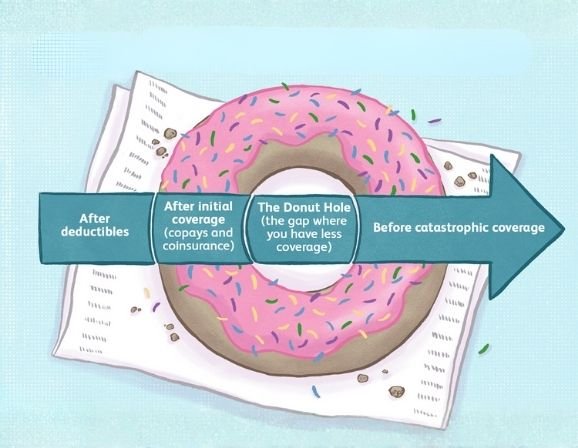You might think marriage only changes your marital status. But under ACA rules, it changes your subsidy math. Here’s how being married vs single affects your ACA subsidies.
How ACA Subsidies Work: The Basics
If you buy health insurance via the ACA marketplace, you may qualify for a premium tax credit (subsidy) to lower your monthly premium. To get subsidies, your income must fall between certain thresholds (typically 100% to 400% of the federal poverty level) and you must meet other eligibility rules. Your household size matters, the poverty line threshold and subsidy amount change as more people are in your tax household.
Your MAGI (Modified Adjusted Gross Income) is used as the income figure for determining subsidy eligibility. When you’re married, those rules shift. Here’s how.
Married Filing Jointly: Subsidy Rules
When you’re married and filing jointly, you and your spouse’s incomes and deductions get combined in MAGI. You must file a joint tax return to claim the premium tax credit.
Your household size includes both spouses plus any dependents claimed on the tax return. Because income thresholds for subsidy scale with household size, being married can reduce your per-person subsidy (you need more income to push you above the cutoff) or increase your subsidy (if your combined income stays within favorable brackets).
Example:
- Two single filers, each earning $35,000, might each qualify for subsidies as individuals.
- Together, married with a combined $70,000, their combined MAGI and larger household size may push them into a different subsidy bracket (or over a threshold).
Why the IRS Requires Joint Filing for Subsidies
The IRS ties ACA subsidies to household income because the law is designed to measure what a family can afford together, not separately. If two spouses could file on their own, both might qualify for separate subsidies, essentially doubling benefits for one household. Joint filing prevents this loophole and ensures subsidies are distributed fairly across the marketplace. While this rule can feel restrictive, it protects the integrity of the system and keeps credits available for those who need them most.
Married Filing Separately: Big Catch
If you’re married but choose married filing separately, you generally lose eligibility for the premium tax credit.
There are a few exceptions:
- If you’re a survivor of domestic abuse or you can claim that your spouse abandoned you, you may still qualify even filing separately.
- If you qualify to file Head of Household despite being married (rare, with restrictions), you might still be eligible.
So the rule: married filing separately → usually no premium tax credit unless specific hardship conditions apply.
| Married? Keep Your ACA Subsidy Safe with Joint Filing Prime Life helps couples file correctly and keep their premium tax credits intact. Get Help |
Single / Unmarried: Simpler Rules
If you’re single/unmarried, your own income and household size define your subsidy eligibility. Your household size includes yourself plus dependents you claim. You don’t include a partner unless you are legally married.
Your MAGI is just your own adjusted gross income plus allowed additions. Being unmarried often gives you “clearer lines” for subsidy calculation without the complication of combining two incomes or needing joint filing.
How Marriage Affects Household Size & Subsidy Bracket
When two people marry, their household size goes up (from two separate households to one combined). That raises the poverty-line threshold they must reach to “move out” of subsidy eligibility.
But combining incomes can push you above subsidy limits faster.
So:
- Larger household = higher income threshold
- Combined income = faster climb toward those thresholds
Marriage can shrink subsidies per person, or sometimes even cut you out of eligibility if the combined income is too high.
MAGI & Income Calculation (for Married vs Single)
MAGI starts with your adjusted gross income (AGI), then adds certain non-taxable items:
- Tax-exempt interest
- Non-taxable Social Security benefits
- Untaxed foreign income
- When married filing jointly, you add your spouse’s AGI plus those items.
- Filing separately is one of the most common causes of losing ACA subsidies.
If you’re married, filing separately (and you are eligible), only your portion of income would be counted, but as noted, separate filers usually lose subsidy eligibility.
Many people don’t miss out on subsidies because of income, but because of ACA subsidy application mistakes. Forgetting to include untaxed Social Security or miscounting dependents can throw off your MAGI. Even a small error can make it look like you earn more than you do, reducing or eliminating your credit. Using an ACA subsidy calculator or working with a broker ensures your numbers are right before open enrollment.
Example Scenarios
| Scenario | Filing Status | MAGI (est.) | Household Size | Subsidy Likely? |
| Single, no dependents | Single | $40,000 | 1 | Yes |
| Married couple, no kids | Joint | $70,000 | 2 | Maybe (depends on brackets) |
| Married filing separately | Separate | $35,000 each | 1 each (if eligible) | Usually no |
| Married couple, children | Joint | $80,000 | 4 | Yes, but the subsidy per person is smaller |
These are illustrative, the subsidy formula is nuanced.
Why It Matters: Financial Impact
- You might pay more in premiums when married vs being subsidized individually.
- You might lose the subsidy entirely if the combined income is too high.
- According to a Commonwealth Fund study, enhanced ACA subsidies have lowered premiums for millions of Americans, showing how filing status and income directly affect affordability.
| Find Out How Filing Status Changes Your ACA Premiums Prime Life models your costs so you avoid subsidy loss when marriage changes your filing. Get Free Consultation |
Real-World Impact on Families and Couples
For many families, losing access to subsidies can mean premiums jump by hundreds of dollars each month. On the other hand, some couples find that combining incomes keeps them under the threshold and actually improves their subsidy. A single parent who marries, for instance, may see their household size grow to three, raising the income cutoff and unlocking stronger support. These shifts show how marriage decisions can have immediate financial effects that go far beyond taxes.
What to Do: Best Moves When Marriage Is Coming
- Before marriage, estimate your combined MAGI and see how far you are from subsidy limits.
- After marriage, file jointly (to keep subsidy eligibility).
- Use a marketplace advisor like Prime Life Financial to model subsidy changes and pick the optimal plan.
- Recheck estimates during open enrollment (Nov 1 for ACA marketplace).
- Report income or household changes midyear: your subsidy may need adjustment.
Conclusion
Marriage changes more than your name; it reshapes your ACA subsidy fate. When you file jointly, your incomes and deductions combine, and your household size grows. That pushes subsidy rules into different zones. Married filing separately usually disqualifies you unless rare hardship exceptions apply. The best move? Model your expected combined MAGI ahead of time and use expert help (like PrimeLife) to choose the right plan and keep your subsidy.
Act now, open enrollment (Nov 1) is closing. Don’t miss your chance to lock in subsidies.
| See How Marriage Impacts Your ACA Subsidy Now Prime Life Financial can estimate your ACA subsidy difference before enrollment. Find Subsidy |
FAQs
How does married filing separately affect Obamacare?
If you file separately while married, you usually cannot claim the premium tax credit. Exceptions exist for abuse or abandonment.
What income is used to determine ACA subsidies?
Your MAGI — AGI plus tax-exempt interest, non-taxable Social Security, and untaxed foreign income is used.
What is the maximum income to qualify for an ACA subsidy?
Normally, up to 400% of the federal poverty level. But under enhanced rules, households spending more than 8.5% of income on premiums may cross above that threshold and still get help.
Does ACA require spouse coverage?
No. ACA does not force you to cover your spouse. But for subsidies, you must include your spouse in your household if you are legally married.
References
Kffcarenec. (2025b, August 9). Explaining health care reform: Questions about health insurance subsidies. KFF. https://www.kff.org/private-insurance/explaining-health-care-reform-questions-about-health-insurance-subsidies/
Admin. (2025, August 26). Determining household size for the premium tax credit. Beyond the Basics. https://www.healthreformbeyondthebasics.org/key-facts-determining-household-size-for-premium-tax-credits/






